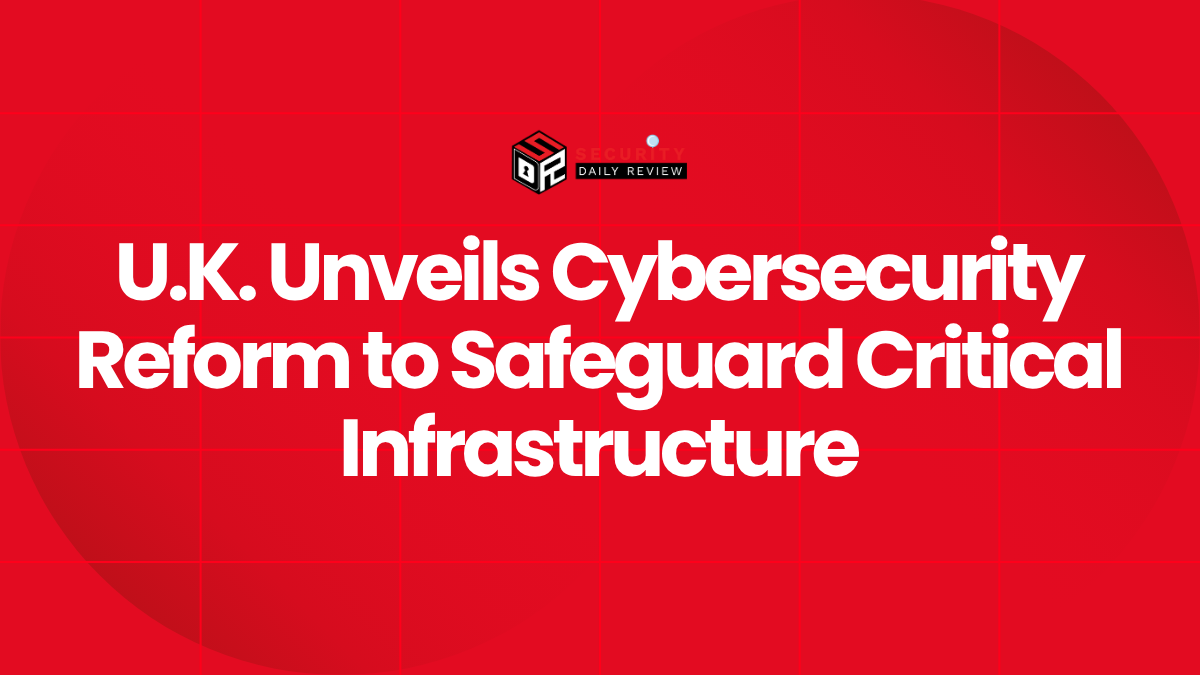The United Kingdom has announced a significant overhaul of its cybersecurity regulations aimed at better protecting critical infrastructure—including hospitals, power grids, water systems, and transportation networks—from sophisticated and increasingly frequent cyberattacks. Exacerbated by expanding threats and high-profile ransomware campaigns, the damage from such attacks has been estimated at nearly £15 billion ($19.6 billion) annually.
Centered around reforming and expanding the existing Network and Information Systems (NIS) Regulations, the new legislation intends to fortify national resilience against disruptive breaches impacting public safety and economic stability.
Revising the NIS Framework to Face Emerging Threats
The U.K. government plans to modernize outdated cybersecurity regulations to meet the demands of today’s high-risk threat landscape.
Originally enacted in 2018, the NIS Regulations were the U.K.’s answer to the European Union’s NIS Directive, targeting improved digital service continuity through strengthened network and information systems. However, the evolving threat environment—marked by the rise of ransomware-as-a-service (RaaS) groups and hybrid war operations—has outpaced the law’s capabilities.
The U.K. aims to address this gap by:
- Expanding the scope of organizations covered by the law beyond traditional critical national infrastructure (CNI)
- Including managed service providers (MSPs) and third-party IT service vendors due to their increasing role in supply chain vulnerabilities
- Granting Britain’s cybersecurity watchdog, the National Cyber Security Centre (NCSC), enhanced oversight powers
These measures are designed to better align legal frameworks with current cyber risk profiles and enforce improved incident response and reporting mechanisms.
Sectors Now Under the Regulatory Microscope
Key industries such as healthcare, energy, transportation, and water must invest in stronger cyber defenses or face consequences.
Under the revised law, a broader swath of organizations operating critical infrastructure must comply with updated resilience benchmarks. The focus sectors include:
- Healthcare – National Health Service (NHS) systems, already scarred by attacks like the 2017 WannaCry ransomware campaign, are mandated to implement robust network defense programs.
- Energy and Utilities – Power grids and water treatment facilities must conform to stricter uptime and incident reporting requirements to minimize operational disruptions.
- Transport – Airports, ports, and rail systems will be required to maintain cyber hygiene plans aligned with threat intelligence and resilience best practices.
The legislation gives regulators the authority to issue fines for non-compliance, with penalties modelled similarly to those under the U.K.’s data protection law (akin to the GDPR).
Recognizing Ransomware as a Systemic Risk
The U.K. repositions ransomware attacks and nation-state threats as top-tier risks to national security and service availability.
Ransomware attacks on CNI operators have transitioned from opportunistic extortion to coordinated campaigns that seek to paralyze public functions. The government’s policy shift reflects an understanding that:
- What were once “IT issues” are now public safety threats
- Ransom incidents often incur lateral damage to downstream service providers
- Payment of ransoms may violate existing laws, depending on attacker affiliations
The revised law hence requires obligated entities to share attack data with the Information Commissioner’s Office (ICO) and the NCSC to accelerate response coordination. Emphasis is also being placed on adherence to cybersecurity frameworks like the Cyber Assessment Framework (CAF) and threat-led penetration testing for high-risk sectors.
Building a National Cyber Resilience Capability
The legislative changes serve as a foundation for improving national coordination and strengthening third-party accountability.
In a move reflective of global legislative trends, the U.K.’s strategy emphasizes ecosystem-wide security rather than siloed protection. By including digital service providers, data centers, and MSPs, the law echoes strategies like the U.S. Cybersecurity and Infrastructure Security Agency’s (CISA) supply chain-focused directives.
Feedback from the public consultation process indicated strong industry support for these additions, especially around supply chain regulations and clearer lines of accountability. The National Cyber Strategy seeks to:
- Ensure that systemic resilience spans both public and private sectors
- Bolster intelligence-sharing between government and industry
- Provide incentives for long-term cybersecurity investments
The reforms are scheduled for phased implementation in coordination with sector-specific regulators.
Striking a Balance Between Regulation and Innovation
Cybersecurity in the U.K. enters a new era focused on resilience, accountability, and partnership.
The U.K.’s legislative overhaul arrives at a time when both domestic and global cyber threats are expanding in complexity. With the economic toll of attacks reaching nearly £15 billion annually, the push for regulatory reform is both timely and necessary.
By recalibrating the NIS Regulations, the U.K. government is not only imposing greater compliance expectations, but also fostering a secure-by-design approach for organizations central to daily life. The updates aim to enhance national security without stifling innovation—offering a framework that can evolve along with the threat landscape.









